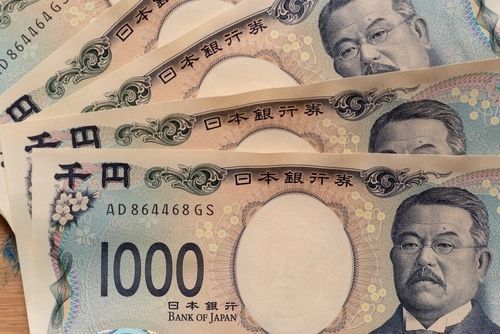Is the Yen's Appreciation a "Mutual Agreement"? Trump Saves Manufacturing, But Why is Japan on Board?

TradingKey - A wave of extreme selling in U.S. dollars and Treasury bonds has triggered a flight to safe-haven assets, with the Japanese yen appreciating toward the 140 level. Amid aligned sentiments from Japanese authorities favoring yen and U.S. President Donald Trump’s push for a weaker dollar, analysts are projecting the yen could strengthen further, potentially reaching 130 against the dollar.
On Sunday, April 13, Itsunori Onodera, head of the Policy Research Council of Japan’s ruling Liberal Democratic Party (LDP), said that as a close ally of the United States, Japan should not retaliate against Trump’s tariffs by selling its holdings of U.S. Treasury bonds. Japan remains the largest foreign holder of U.S. Treasuries.
Onodera’s comments appeared to serve two strategic purposes: first, to dispel the market that Japan’s potential sale of U.S. Treasuries had triggered recent bond market turmoil; and second, to counter suggestions from opposition lawmakers proposing Japan use its Treasury holdings as leverage in trade negotiations with the U.S.
Onodera further acknowledged that the yen’s prolonged weakness has significantly increased living costs for Japanese households, adding that a stronger yen— alongside improved industrial competitiveness— is essential for Japan’s economic health.
Reuters interpreted Onodera’s remarks as a possible indication that Japanese policymakers now consider yen depreciation a greater concern than yen appreciation. While a weaker yen has traditionally benefited Japan’s export-driven economy, supported by decades of accommodative monetary policy, a policy shift may be underway.
According to Nikkei, internal voices at the BOJ suggest that a reversal in yen weakness could help temper inflation, giving policymakers more flexibility in deciding when and how to raise interest rates.
However, the path to rate hikes is fraught with risks. A stronger yen could hinder Japanese exporters’ competitiveness, and in today’s volatile global financial environment, interest rate increases could intensify market instability. Notably, a similar scenario triggered a sharp unwinding of yen carry trades in early August 2024.
Regarding the yen’s rise against the dollar, both U.S. and Japanese authorities now appear aligned. President Trump has repeatedly argued that a strong dollar relative to the yen undercuts U.S. manufacturing exports. Revitalising American industry remains a central theme of his current economic agenda.
With tariff negotiations between the U.S. and Japan on the horizon, the exchange rate of the yen is likely to become a key discussion point.
Mitsubishi UFJ Bank has forecast that if the U.S. takes steps to demand a correction of the yen’s previous depreciation, the dollar-yen exchange rate could fall to 130 in the near future.
* The content presented above, whether from a third party or not, is considered as general advice only. This article should not be construed as containing investment advice, investment recommendations, an offer of or solicitation for any transactions in financial instruments.


